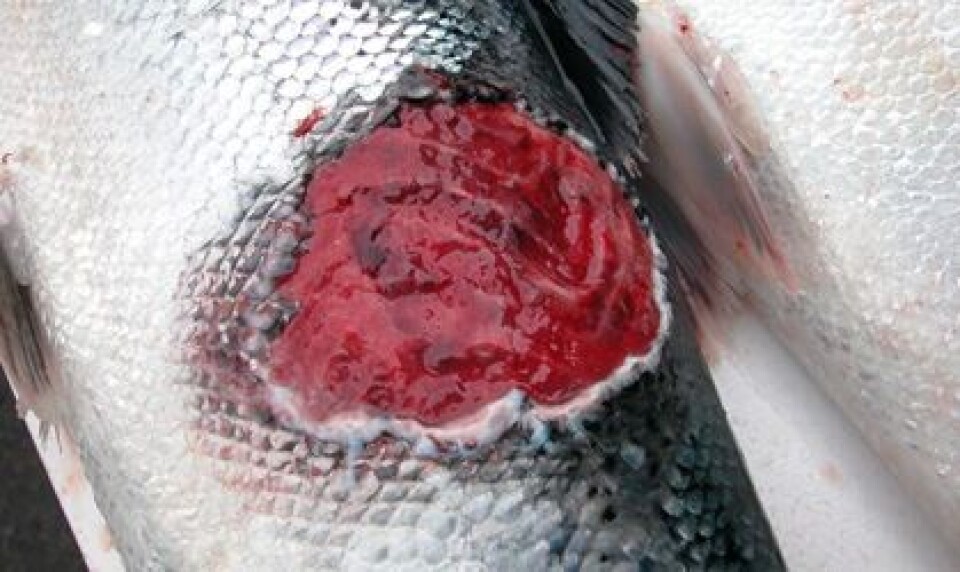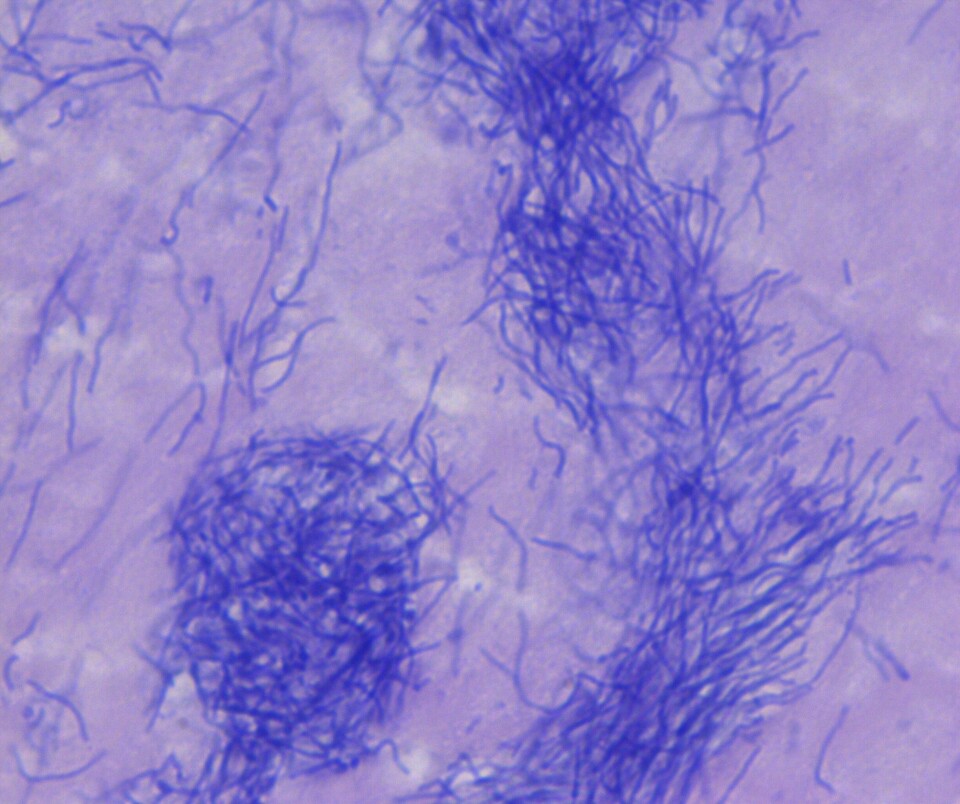
Seaborne bacteria blamed for ‘sudden and powerful’ disease outbreak
Scientists have highlighted the threat of the seawater bacterium Tenacibaculum dicentrarchi to post-smolts after it was described as the cause of a salmon disease outbreak in Norway for the first time.
Skin ulcers, fin erosion and mortality were observed a few days after the transfer of Atlantic salmon from a freshwater smolt production facility to a land-based seawater post-smolt site.
Dead and moribund fish had severe skin and muscle ulcers, often 2cm-6cm wide, particularly in the area just behind the pectoral fins.

Increasing incidence
Professor Henning Sørum of the Norwegian School of Veterinary Science is a co-author of a paper that described the occurrence of disease. He said the outbreak was sudden and powerful and so characteristic that it was clear that it had an infectious cause.
“That is why we wanted to use the outbreak for a description of the disease in Norway,” he told Fish Farming Expert’s Norwegian sister site, Kyst.no.
He added that T. dicentrarchi had in all likelihood caused disease in farmed salmon in Norway for many years and that the disease may have had an increasing incidence in recent years.
“It is probably the case that T. dicentrarchi is one of several bacteria that gives fin rot, wounds and mortality the first few weeks after setting out the smolt, in the so-called post-smolt period,” he pointed out.
Different analyses
Sørum explained that the disease can, however, be slower to develop or chronic, and that there may be several other bacteria that contribute. It is therefore not easy to identify T. dicentrarchi or other Tenacibaculum species as the primary cause.
“In addition, growing Tenacibaculum bacteria is not that easy. All this contributes to the fact that the disease caused by this particular Tenacibaculum variant has not been described previously,” said the professor.
The researchers wrote that they identified the bacterium through several different analyses such as microscopy, genetic mapping and by studying changes in the tissue of the fish.
After identifying the bacterium, they performed two infection tests with T. dicentrarchi, one of which resulted in no mortality. In the second experiment, the fish were exposed to a higher dose of the bacterium over an extended period of time.
“This resulted in 100% mortality,” the researchers noted.

First described in Spain
The researchers explain that tenacibaculosis has most likely been a major problem for smolt that were transferred to sea in north west Norway in the spring of 2018.
They add that farmers describe similar disease development to that which the researchers observed during the outbreak described in the article.
“T. dicentrarchi was first described in Spain and it emphasises that this bacterial species, like several others found in seawater, is international bacteria that travel with the great ocean currents,” said Sørum.
“There are factors such as temperature and salt content in the water and a fish host that is receptive which together determines whether disease should occur.”
Not ‘exotic’
Although the bacterium was first described in Spain, Sørum emphasised that this is not a so-called “exotic” disease that arrived in Norway because someone brought infected material in.
“The same bacterial species has also been found to give the same type of disease in salmon farmed in Chile,” he said.
The professor explained that when the disease occurs it can have a slightly varying rate of development. One can see that the fins begin to become eroded, which means that the fish lose soft tissue between the bone structures in the fins.
“In addition, there is a loss of scales in several places in the skin and there are often areas on lower and upper jaws that are most affected.”
Smolts can die quickly
Much of the soft tissue on the jaws is lost because the bacteria eat it up by means of enzymatic degradation.
“The smolts can die quite quickly before the visible signs are developed or they can die later after the changes are more developed,” said Sørum.
He said that in case of acute outbreaks, up to a few per cent of the population will die within the space of a week before the outbreak is over.
“Fin degradation and wounds can be developed in a few hours,” said Sørum.
“However, it appears that older fish do not become so ill and that fish that have survived such an infection in the cage do not appear to be exposed to new infections with this bacterium.”
He said there are currently no effective vaccines against the infection, although several attempts were being made to develop one.























































